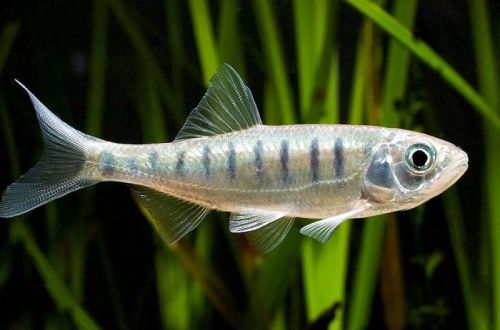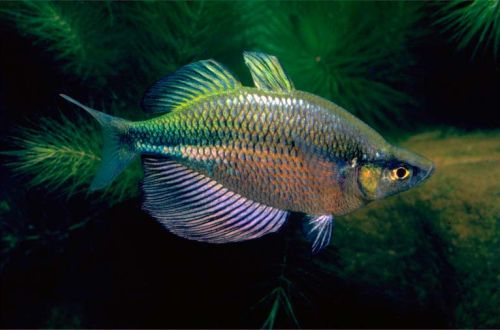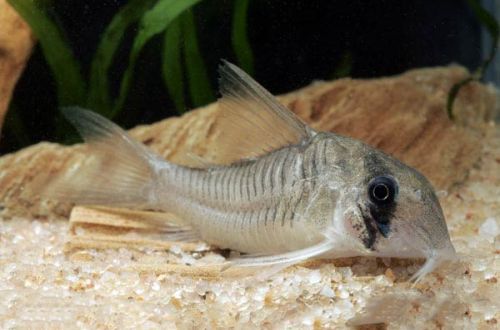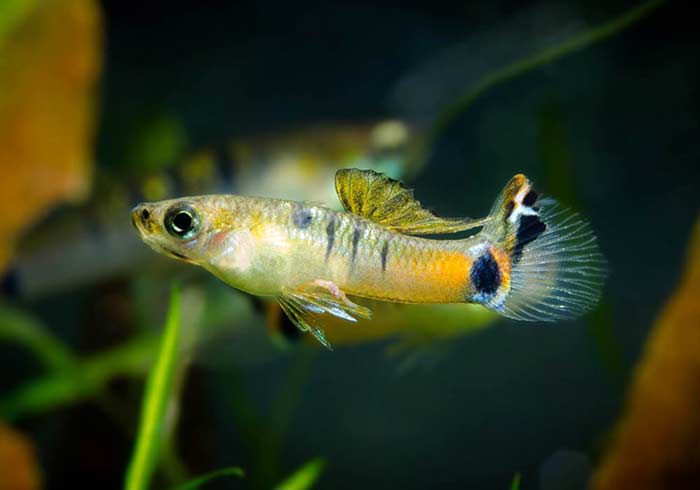
Micropecilia Brannera
Micropoecilia Branner, scientific name Micropoecilia branneri, belongs to the family Poeciliidae (Peciliaceae). The fish is native to South America. It is found throughout the vast Amazon basin in various biotopes.

Contents
Description
Adult individuals reach a length of 3–4 cm. Males have a bright color, the brilliance of which depends on age and place in the hierarchy within the flock. Dominant individuals look more colorful than those at the very bottom of the “social ladder”. The color is dominated by golden, turquoise colors interspersed with red, green, blue hues. The body pattern consists of dark 7–9 transverse stripes, and at the base of the caudal peduncle there is a large black spot, also called the “false eye”. Another spot may be on the back under the dorsal fin.
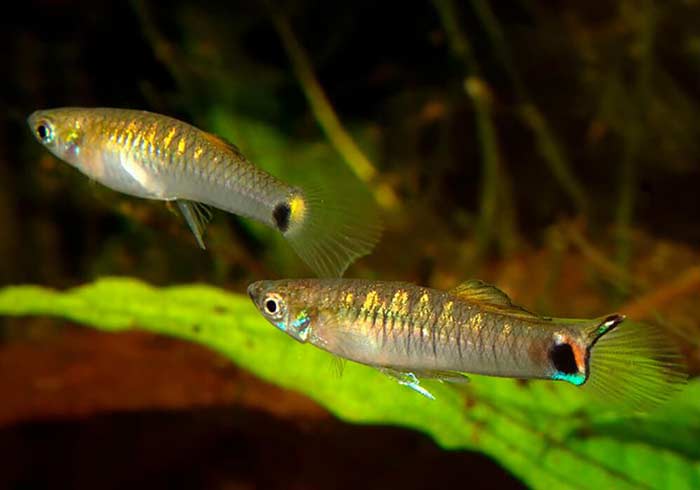
As a rule, among the viviparous species, a distinct sexual dimorphism is noticeable, where the males have a bright color, and the females have gray faded colors. In the case of Micropecilia Brunner, the situation is somewhat different. Females have a pattern and coloration similar to males, but not as intense as they resemble subdominant males. A clear difference in size – they are noticeably larger with a distinctly prominent silvery belly.
Behavior and Compatibility
Exceptionally gregarious. Fish need the company of relatives, for this reason it is recommended to purchase a group of at least 8-10 individuals. Alone or in a pair, there is a high probability of color loss, which is especially true for males.
Peaceful towards other species. Compatible with many other fish of comparable size and temperament.
Brief information:
- The volume of the aquarium – from 40 liters.
- Temperature – 22-29°C
- Value pH — 6.0–7.0
- Water hardness – soft (2-8 dGH)
- Substrate type – any
- Lighting – subdued
- Brackish water – no
- Water movement – light or moderate
- The size of the fish is 3-4 cm.
- Food – any food
- Temperament – peaceful
- Keeping in a group of at least 8-10 individuals
Maintenance and care, arrangement of the aquarium
The optimal sizes for a small flock of these fish start at 40 liters. Arrangement is optional. The presence of shelters in the form of thickets of plants, including floating ones, is welcome.
In Russian-language sources, information is widespread that in nature Brunner’s Micropecilia, in addition to fresh water, lives in brackish conditions. Proceeding from this, numerous articles give appropriate recommendations on the content.
However, in English-language sources, including the international scientific catalog of fish Fishbase, there is no mention of the presence of these fish in a brackish environment.
Considering that in most sources, including Russian-speaking ones, the requirements for the hydrochemical composition of water indicate mild, slightly acidic dGH and pH values, then you should refrain from using salt when containing Branner’s Micropecilia.
The rest of the maintenance of the aquarium is quite simple. It is important to regularly replace part of the water with fresh water, remove accumulated organic waste in a timely manner and carry out preventive maintenance of equipment.
Food
An omnivorous species, they will accept most popular foods such as dry food, live or frozen brine shrimp, daphnia, bloodworms and other invertebrates.
Breeding / breeding
Most viviparous species reproduce easily and do not require any special conditions. Parental instincts are not developed, so fry often become the prey of adult fish. You can save offspring by timely catching juveniles and transplanting them into a separate tank. If the aquarium has enough dense plant growth, then some of the fry can survive and reach maturity without the intervention of the aquarist.



